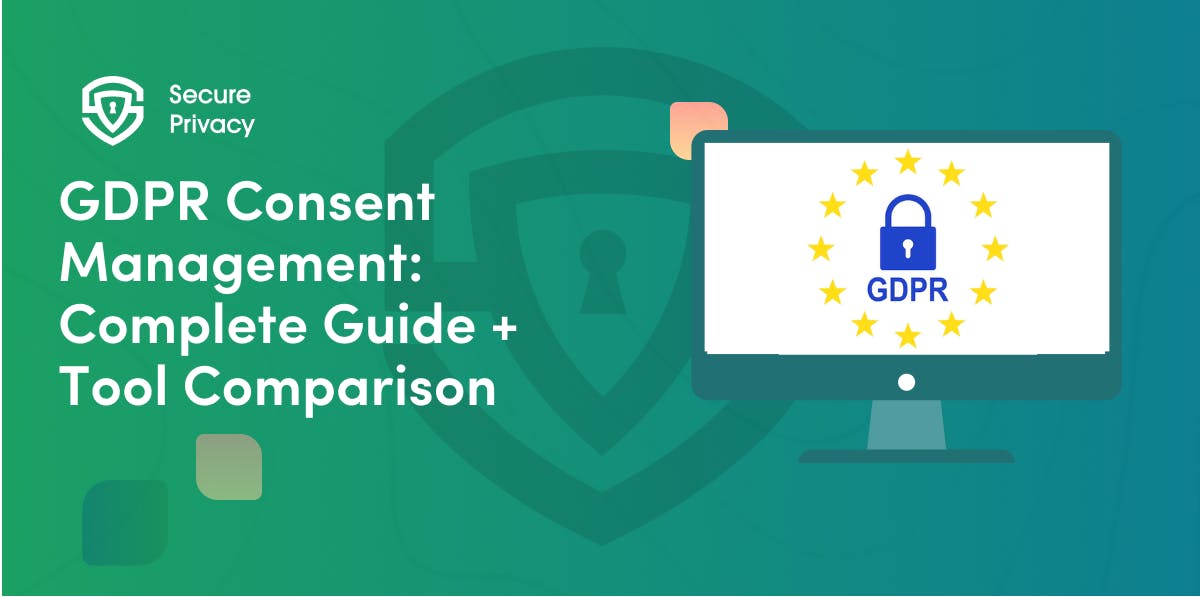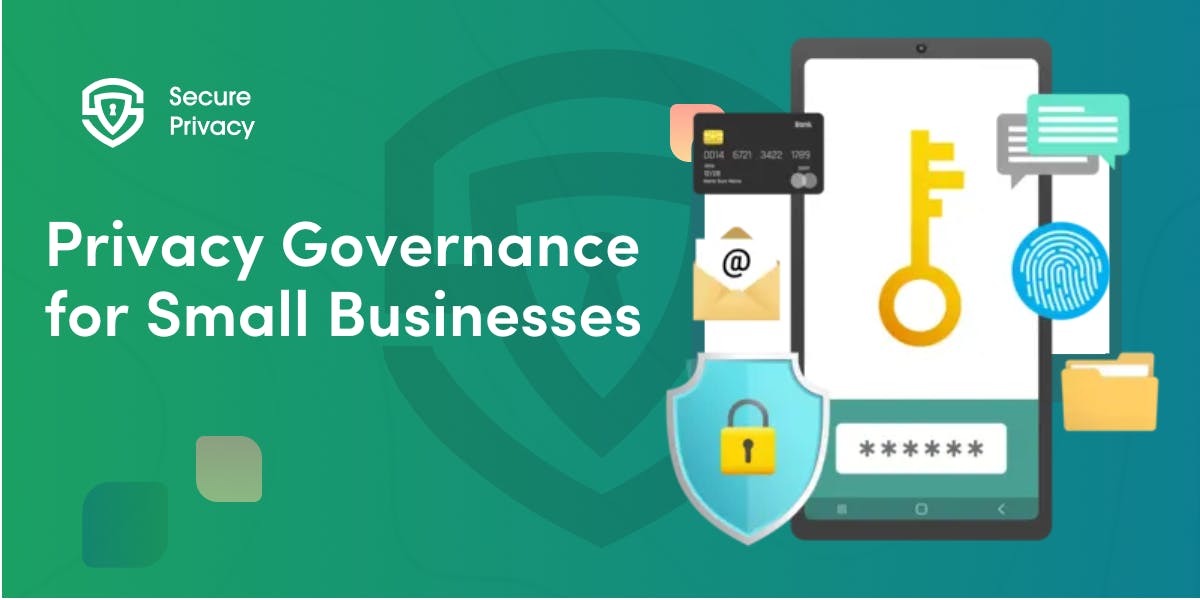Google Announces Google Consent Mode V2 [Free Checklist for Website Owners]
Explore Google Consent Mode V2, a transformative shift in data management within Google's ecosystem, offering granular user control, GDPR compliance, and insights for businesses. Learn its features, benefits, implementation steps, and integration with CMPs.
Google Consent Mode V2, arriving March 2024, isn't just a technical update; it's a full-blown reorchestration of how data is collected, managed, and utilized within Google's ecosystem, particularly in the data-sensitive realms of the European Economic Area (EEA). This new system moves beyond the tired binary of "opt-in" or "opt-out" and empowers users with a conductor's baton, allowing them to fine-tune how their data plays out. Let's dive deeper into the intricate movements of Consent Mode V2, exploring its impact on businesses and website owners.
Unsure if your current set-up covers Google Consent Mode V2? Download a free checklist here.
What is Google Consent Mode V2?
Google Consent Mode V2 is a major update to how Google interacts with user consent for data collection and usage within its ecosystem, particularly in the European Economic Area (EEA) due to stricter privacy regulations like GDPR. It brings several significant changes compared to the previous binary "opt-in/opt-out" system:
- Granular Control: Users now have more granular control over their data, choosing which types of data can be collected, stored, and used, across four key areas:
- Analytics Storage: Whether data can be stored for website/app analytics.
- Analytics Reporting: Whether stored data can be used for generating reports.
- Ad Storage: Whether ad-related data can be stored on user devices.
- Ad User Data: The most crucial choice, allowing users to control whether data is shared with Google Ads for personalized targeting. - Standardized Language: Consent choices are translated into a standardized format (TCF v2.0), ensuring clear communication between users, websites, and Google.
- Flexible Adaptation: Google tags and SDKs adapt their behavior based on user consent choices. For example, without "ad user data" consent, personalized ads won't be shown.
- Data Gap Modelling: Google can use algorithms to fill in data gaps for conversion tracking even with limited consent, helping businesses maintain some level of ad effectiveness.
How does Google Consent Mode V2 work?
Imagine you're running a bakery, and you want to know what kind of cookies your customers like. You can set up little trackers (like cookie crumbs) to see what they buy, but you should ask their permission first.
Google Consent Mode V2 is like a system for asking those permissions. It works with websites and apps that use Google tags, which are like the crumbs in our bakery analogy. These tags can collect information about users, like what they click on or how long they stay on a page.
Here's how it goes:
- You, the website owner, explain to your customers (users) what data you want to collect and why. You give them options to choose which cookies they're okay with, like "I'm fine with basic cookies for remembering my preferences" or "No cookies, please!"
- Your customers make their choice. Their decision is stored in a special code called the "TC String." It's like a little note saying "chocolate chip cookies only, please."
- Google sees the TC String and adjusts its behavior. If a customer says no cookies, Google tags won't collect any data about them. If they're okay with some cookies, Google can collect limited information based on their choices.
- You get reports based on the collected data. This helps you understand your customers and improve your bakery (website or app).
Think of it like this:
- Consent Mode V2 is the permission slip.
- The TC String is the note on the permission slip.
- Google tags are like the crumbs that collect information (only if allowed).
- Your reports are like the delicious cookies you bake based on what your customers like.
Which data is covered by Consent Mode v2?
Google Consent Mode V2 focuses on four key areas of data collection and use:
- Analytics Storage: This covers whether website or app activity data can be stored for future analysis. Users can choose to "grant" or "deny" storage of this data, which impacts how much information businesses can access for understanding user behavior and website performance.
- Analytics Reporting: This deals with whether stored data can be used to generate reports for businesses. Granting consent allows businesses to create reports on user activity, while denying it prevents them from generating detailed reports using user data.
- Ad Storage: This concerns whether ad-related data, such as cookies and other identifiers, can be stored on user devices. Granting consent allows for personalized advertising and ad retargeting, while denying it restricts such practices and limits ad personalization.
- Ad User Data: This is the most crucial area, determining whether user data can be shared with Google Ads for personalized advertising. Granting consent allows Google to use user data for targeted ad campaigns, while denying it significantly limits personalized ad exposure for the user.
Remember, users can make independent choices for each of these areas, offering a granular level of control over their data. This is a major shift from the previous binary "opt-in/opt-out" system for data collection, giving users more power to decide how their data is used within Google's ecosystem.
What are the key features of Google Consent Mode V2?
Google Consent Mode V2 boasts several key features that mark a significant shift in how user data is handled within the Google ecosystem, particularly in the EEA:
- Granular User Control: This is the cornerstone of Consent Mode V2. Users are no longer confined to a binary "all or nothing" choice regarding their data. Instead, they can choose which specific data types they want to share and for what purposes, offering a much more nuanced level of control.
- Standardized Language (TCF v2.0): Consent choices are translated into a standardized format called TCF v2.0, ensuring clear communication between users, websites, and Google. This eliminates ambiguity and ensures everyone understands the user's data preferences.
- Flexible Adaptation: Google tags and SDKs, the tools used by websites and apps to collect and manage data, adapt their behavior based on user consent choices. For example, if a user denies ad user data consent, personalized ads won't be displayed. This flexibility allows businesses to tailor their data practices to individual user preferences.
- Data Gap Modeling: Even with limited consent, Google can use sophisticated algorithms to model and fill in data gaps for conversion tracking. This helps businesses maintain some level of ad effectiveness while respecting user privacy choices.
- Transparency and Trust: By giving users more control over their data, Consent Mode V2 fosters transparency and builds trust between users and businesses. This can lead to stronger relationships and a more positive user experience.
- Compliance with GDPR and other Privacy Regulations: Consent Mode V2 plays a significant role in helping websites comply with GDPR and other privacy regulations, reducing the risk of legal and reputational damage for businesses operating in the EEA.
- Beyond Personalized Ads: While personalized ads may be limited with certain consent choices, Consent Mode V2 encourages businesses to explore alternative targeting strategies like contextual advertising, demographics-based targeting, and first-party data collection. This opens doors for new and innovative ways to reach target audiences while respecting user privacy.
- Ongoing Dialogue: Consent is not a one-time setting. Users can change their preferences at any time, sending updated signals to Google, and the system adapts accordingly. This ensures that user control remains dynamic and relevant.
- Technical Challenges: Implementing Consent Mode V2 requires technical expertise, as businesses need to integrate with Consent Management Platforms (CMPs) and adapt their website practices. This can be a challenge for some businesses, but resources and support are available.
Overall, the key features of Google Consent Mode V2 represent a significant step towards a more user-centric and privacy-conscious data ecosystem. By empowering users with control over their data, fostering transparency, and encouraging new approaches to data collection and targeting, Consent Mode V2 paves the way for a future where businesses can thrive while respecting user privacy.
What benefits do Google Consent Mode V2 offer to website owners?
Google Consent Mode V2 gives your users more control over their data, which can:
- Boost trust and engagement: Users feel empowered, leading to happier customers and a better online experience for everyone.
- Make compliance easier: No more GDPR headaches! Consent Mode V2 helps you tick all the legal boxes.
- Open new ad doors: Don't rely just on personalized ads. Explore other targeting options like contextual advertising and user demographics.
- Get valuable insights: Even with limited data, you can still learn about your website and users.
- Stay ahead of the curve: Embrace privacy-focused solutions and stand out in the digital world.
How can businesses implement Google Consent Mode V2?
Google Consent Mode V2 isn't just a technical update; it's a paradigm shift in data management, and businesses need to be prepared. Here's a roadmap for getting ready:
- Educate Your Team: Immerse yourself and your team in the intricacies of Consent Mode V2. Understand its features, user control options, and implications for your data practices.
- Choose a Consent Management Platform (CMP): CMPs help you collect and manage user consent signals. Choose one that integrates seamlessly with your website and supports Google Consent Mode V2.
- Test and Adapt Your Website: Ensure your website and data practices respect user choices. This may involve updating your privacy policy, data collection methods, and ad targeting strategies.
- Explore Beyond Personalized Ads: Don't rely solely on personalized ads. Diversify your targeting strategies with options like contextual advertising, demographics-based targeting, and first-party data collection gleaned directly from users.
- Invest in Privacy-Preserving Solutions: Look for cookieless measurement and privacy-preserving analytics tools to track user behavior and ad effectiveness while respecting consent choices.
- Stay Up-to-Date: The data landscape evolves rapidly. Stay informed about changes in Consent Mode V2 and other privacy regulations to ensure continuous compliance.
Is Google Consent Mode V2 GDPR compliant?
Google Consent Mode V2 isn't a magic bullet for GDPR compliance, but it's a significant step in the right direction. Here's the breakdown:
Yes, it helps with compliance:
- Granular user control: Consent Mode V2 aligns with GDPR's emphasis on user control by providing fine-grained options for data collection and usage.
- Standardized format: TCF v2.0 ensures clear communication about consent choices, making it easier to demonstrate compliance.
- Focus on key areas: It covers key areas relevant to GDPR, like analytics storage and reporting, ad storage, and ad user data sharing.
However, it's not a complete solution:
- Additional measures needed: Businesses still need to implement other GDPR compliance measures like data minimization, data security protocols,and clear privacy policies.
- Interpretation and application: Consent Mode V2 doesn't automatically guarantee GDPR compliance. Businesses need to interpret the user choices within the context of GDPR requirements.
- Focus on EEA: It primarily targets data collection within the EEA, so businesses operating outside this region need to consider their own privacy regulations.
Overall, Google Consent Mode V2 is a valuable tool for businesses operating within the EEA to enhance their GDPR compliance efforts. But remember, it's not a one-stop shop for achieving full compliance. Businesses must take additional steps and ensure their practices align with the broader GDPR framework.
Does Google Consent Mode V2 work with Google Ads and Google Analytics 4?
Yes, Google Consent Mode V2 does work with both Google Ads and Google Analytics, and it's actually designed specifically to manage how these tools behave based on user consent for cookies and data usage. Here's how it works:
Consent Mode V2:
- Adjusts functionalities: It allows you to control how Google tags, including Google Tag Manager, Google Ads,and Google Analytics, operate based on the user's consent level for cookies and data.
- Requires explicit consent: Unlike the previous version, V2 requires clear user consent for personalized ads and analytics tracking.
- Offers conversion modeling: For Google Ads, it allows for conversion modeling even when users haven't given consent, helping you estimate missing data.
Benefits for Google Ads and Google Analytics:
- Privacy compliance: Helps ensure you comply with privacy regulations like GDPR and CCPA.
- Improved user trust: Provides transparency and control over data usage for your website visitors.
- Continued data collection: Enables basic analytics and conversion tracking even without full consent, offering valuable insights.
Implementation:
- You need to configure your website's cookie banner to capture user consent and set the corresponding Consent Mode value.
- If you want to continue using Google Ads for your advertising in the EEA markets, you need to use a cookie banner integrated with Google Consent Mode v2 by March 2024.
- Google tags will then interpret this value and adjust their functionalities accordingly.
Can Google Consent Mode V2 be integrated with other consent management platforms (CMP)?
Yes! Google Consent Mode V2 is designed to be compatible with various Consent Management Platforms (CMPs) through the TCF v2.0 standard. This allows for greater flexibility and choice for businesses when it comes to managing user consent. However, there are a few things to keep in mind:
- Not all CMPs support Google Consent Mode V2: While many CMPs are actively working on integrating with Google Consent Mode V2, some may not be fully compatible yet. It's important to check with your chosen CMP to ensure they can support all the features of Consent Mode V2 and send the necessary TCF v2.0 signals to Google.
- Integration complexity can vary: Integrating a CMP with Google Consent Mode V2 can involve different levels of technical complexity depending on the platform and your website's specific requirements. Some CMPs offer seamless integration with pre-built connectors, while others may require more manual configuration and testing.
- Consider your specific needs: When choosing a CMP, consider your website's size and complexity, the level of user consent granularity you require, and your budget. Some CMPs offer basic functionalities for free, while others offer premium features with subscription plans.
The easiest way to keep your revenue and business campaigns running smoothly is to use a Google Certified Consent Management Platform (CMP) with Consent Mode v2.
Secure Privacy: Your Partner in Navigating Google Consent Mode V2
In the ever-evolving landscape of data privacy, Google Consent Mode V2 marks a significant step forward. But navigating its complexities can feel daunting. That's where Secure Privacy comes in, your trusted partner for seamless integration and user-centric data management.
Why choose Secure Privacy's CMP for Google Consent Mode V2?
- Granular Control: Empower your users with the power to choose exactly what data they share, from analytics storage to personalized ad targeting.Our user-friendly interface makes it easy for them to understand and make informed decisions.
- Compliance Confidence: Breathe easy knowing you're on the right side of regulations like GDPR. Our CMP integrates seamlessly with Google Consent Mode V2, ensuring accurate signal transmission and transparent data handling practices.
- Frictionless Integration: Forget complex setups and technical headaches.Our CMP is designed for ease of use, offering pre-built connectors and intuitive configuration tools to get you up and running in no time.
- Transparency and Trust: Build stronger relationships with your users by fostering trust and demonstrating your commitment to data privacy. Our transparent communication and clear consent mechanisms put users in control.
- Secure by Design: Your data is our top priority. We employ industry-leading security measures and rigorous data protection practices to keep your users' information safe and secure.
Secure Privacy's CMP goes beyond compliance. We offer a comprehensive suite of tools and resources to help you leverage Google Consent Mode V2 to your advantage. Gain valuable insights into user preferences, explore alternative targeting strategies, and optimize your data collection practices for a future of privacy-conscious growth.
Don't let Google Consent Mode V2 become a source of stress. Partner with Secure Privacy and experience the power of user-centric data management. Contact us today for a free consultation and see how we can help you thrive in the new era of data privacy.
Get Started For Free with the
#1 Cookie Consent Platform.
No credit card required

GDPR Consent Management: Complete Guide + Tool Comparison
Your website could be costing you €20 million. Every cookie that loads before user consent, every "accept all" button without an equally prominent reject option — these aren't minor oversights. They're violations that data protection authorities are actively hunting.
- Legal & News
- Data Protection

How to Design High-Performing Cookie Banners in 2026
“You're one click away from a €325 million fine”. That's what Google learned in September 2025 when French regulators hit them for cookie consent violations. The message is clear: cookie banner design in 2026 isn't about getting extra clicks anymore — it's about survival.
- Legal & News
- Data Protection

Privacy Governance for Small Businesses: Step-by-Step Guide
You're a 20-person company. A customer asks for their data. Your marketing team just added a new tracking pixel. Your CRM vendor updated their terms. And you just realized you might need to comply with GDPR, CCPA, or both.
- Legal & News
- Data Protection

